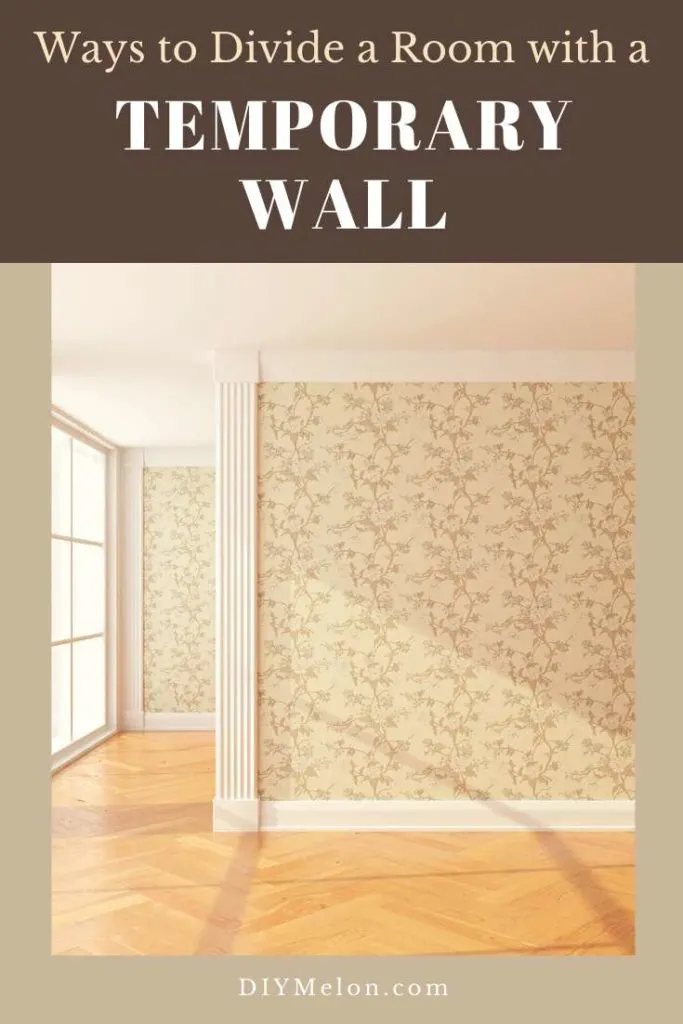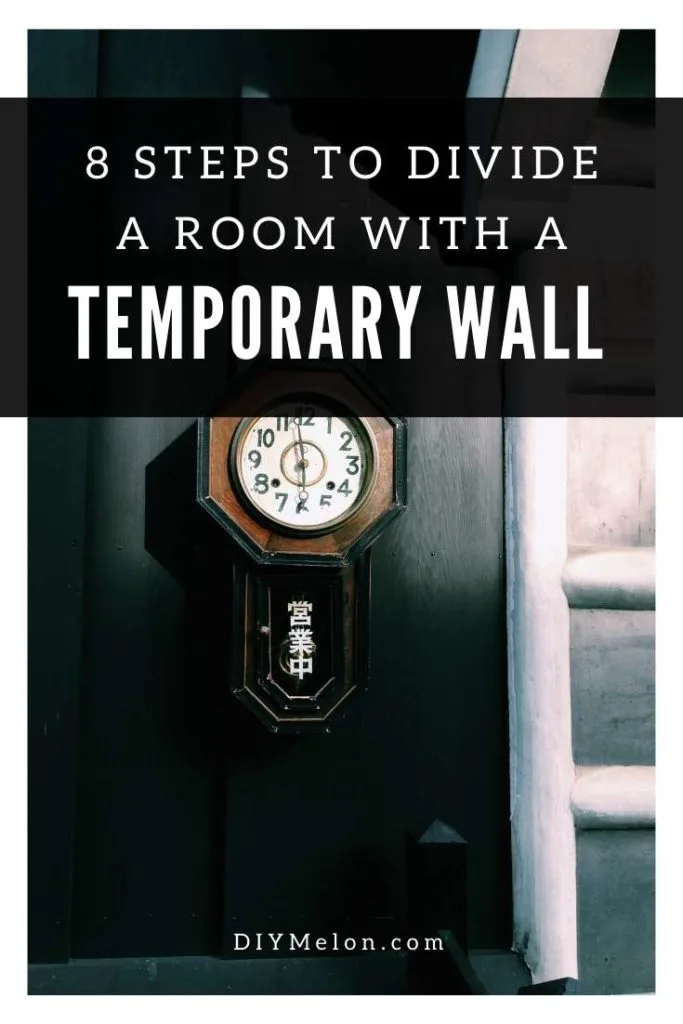Many renters, as well as house owners, use temporary walls for dividing a large room. A temporary wall can be very useful if you want to use the space of your large room efficiently. Knowing how to divide a room with a temporary wall will bring you more benefits then you can imagine. You will be more benefited from a temporary wall in your room if you have a toddler who can’t sleep alone.
Also, in many old houses, the living rooms are quite large. If you want to use the space efficiently, you can build a temporary wall in the benefits. Again, if you don’t own a house and need more rooms, you can always build a temporary wall. On the other hand, you can experiment by building a temporary wall in your room if you want to make a permanent wall later.

You can see if the wall is creating more benefits for you or not and then take the decision. Below, we have provided a step by step guide which will help you to build a temporary wall in your room.
How to Divide a Room with a Temporary Wall
Step 1: Gather the necessary tools
You will need a few handy tools to build a temporary wall in your room. The first thing that you will need is a sill seal. Then, you will need a 2×4 lumber, hammer, drill, circular saw, nails, and drywall. You will find all these tools in your nearby hardware store. You can also purchase these tools online if you want.
Step 2: Place sill seal to protect your floor
You might be worried about damaging your floor while building a temporary wall in it. But we have a solution which will protect your floor. A lot of people are not familiar with sill seals. These are very useful in terms of creating a base for temporary walls. Sill seals are a kind of foam that usually comes in a thickness of around ¼ inches.
You can attach this sill seal on your floor, walls, and ceiling, as well. Also, if you attach a sill seal on the floor and the wall, it will provide support and pressure to the temporary wall. As a result, the wall will stay right in the place, and it will be easier for you to reposition it when needed.
Step 3: Cut two pieces of 2×4 wood
Now, you will need to cut two pieces of 2×4 woods. You can use a circular saw to get a proper measurement. If you use a jigsaw, you will probably need more time then otherwise. Make sure that the blades in the circular saw are sharp and new. Otherwise, you will have an uneven cut at the end. You will need to be careful while using the circular saw as it is quite hard to cut the wood properly with that much speed.
If you are comfortable with using a circular saw, this shouldn’t be a problem for you. The purpose of cutting two pairs of 2×4 wood is to form the margins of the wall for both top and bottom. After you are done cutting the 2×4 woods, let’s move on to the next step.
Step 4: Measure the height of your room
The next step is to measure the height of your room. If your room has an even height, take one measurement from any point of the room. On the other hand, take two measurements from two sides if the height of your room is not constant.
After you are done taking the height of your room, you will need to subtract three inches from the measurement you took earlier. Now, you will need to cut two more pairs of 2×4 planks of wood-based on this measurement.
Step 5: Place vertical studs in the temporary wall
Now you will need to place the vertical studs. Place the bottom plate of the wall on the sill seal that has been attached to your floor earlier. If you find it difficult to do this step on your own, take help from another person. You will need to cut the studs if these are too big for your temporary wall.
Step 6: Secure the vertical studs on the temporary wall with nails
You will need to have the proper sized vertical studs, which will be easily set on the temporary wall. After you are done trimming the studs, it is time to secure them on the wall. You can use nails, which will hold the studs in the right place. The purpose of using nails and screws is to secure the studs on the plate. If you need to remove the studs later, it is better to use a screw instead of nails as these are easier to remove.
Step 7: Attach drywall panels to the temporary wall
Now you will need to attach drywall panels in your temporary wall. The purpose of using drywalls is that these are durable and quite easy to install. Installing a drywall panel will be more convenient for you as it is less costly and will take less time to do it. Most of the time, temporary walls don’t work as a noise barrier.
So, there is less privacy with a temporary wall rather than a permanent wall. But if you install drywall panels on your temporary wall, it will work as a barrier to some extent. So, you can install drywall panels on your temporary wall if you want more privacy.
Step 8: Paint the wall
After you are done installing the temporary wall to divide your room, it is time to have some fun. You can paint the wall based on your preference. For example, if you have built a temporary wall in your kid’s room, you can paint the wall with his or her favorite color. On the other hand, you can also add some texture to the wall.
If you follow this guideline, you will be able to divide your room by building a temporary wall. The benefit of having a temporary wall is that you get to use your room space efficiently.



